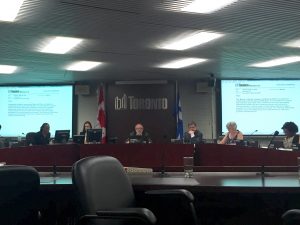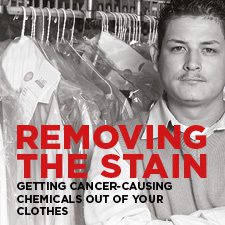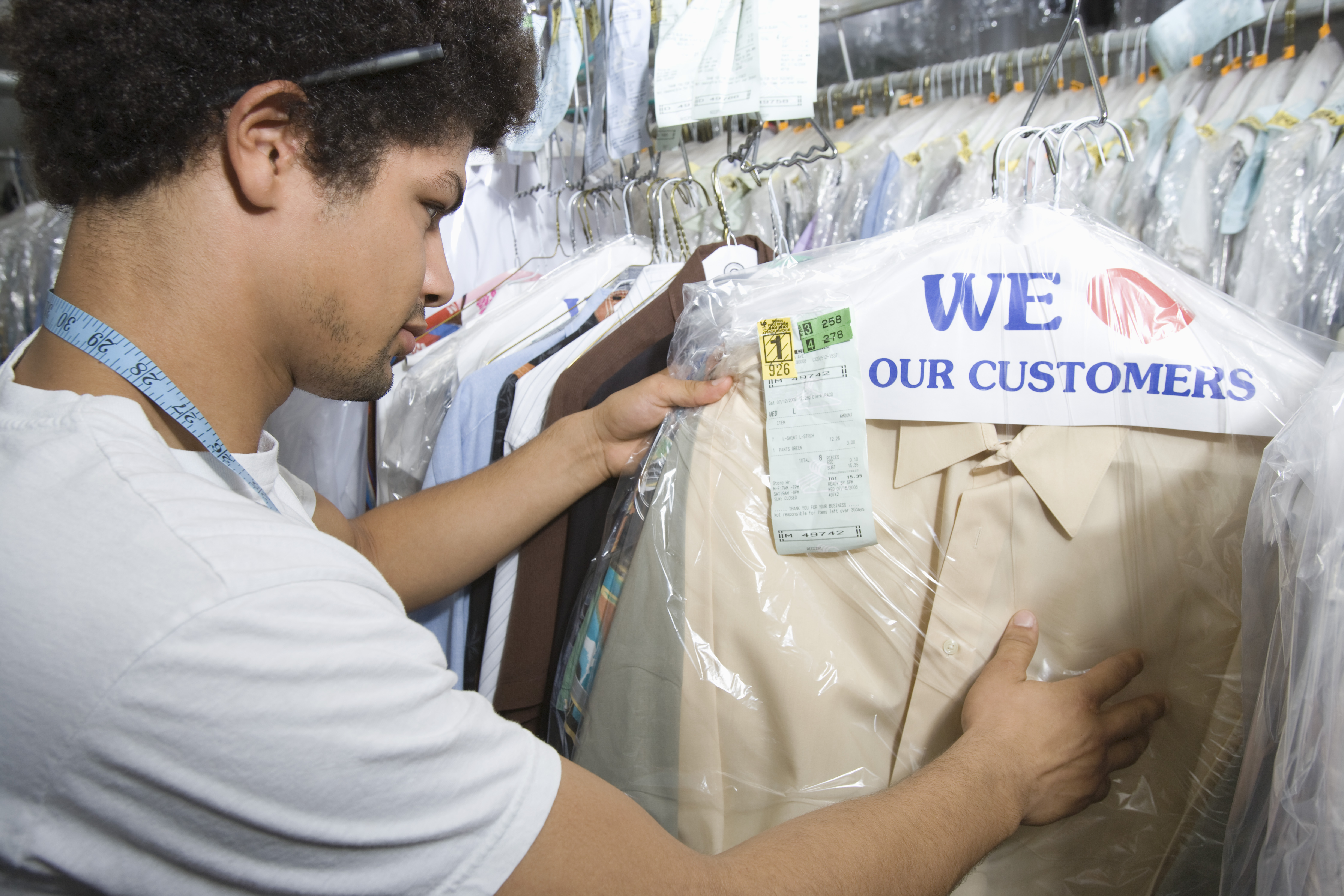Toronto’s Board of Health decided that consumers have the right to know what chemicals are used in dry cleaning their clothes.

Do you use or live by a dry cleaner and wonder what kind of chemicals or solvents they use to clean clothes? While you can always ask, there may be no way to know for sure.
This could change soon. The City of Toronto will be considering ways to publicly disclose chemicals used and their potential hazards at every dry cleaner.
Thousands of Toronto residents use dry cleaners to clean their clothes, and many, in doing so, unknowingly hand over their expensive suits or stained garments to be soaked in a toxic solvent like PERC. Even signs displaying terms like “organic” or “green” on storefronts can often be misleading (some allegedly “green” solvents like Siloxane D5 might be contributing to significant contamination levels in some Great Lakes fish).
The lack of reliable information on what dry cleaners use might be unsettling for many, and rightly so. But soon, Torontonians who dry clean their clothes will no longer be left wondering. The City of Toronto has decided people have the right to know what may be polluting their clothes or environment, and will be exploring ways to require dry cleaners to publicly display the chemical solvents used and their associated health and environmental hazards.
Last week, Toronto’s Board of Health reviewed and supported recommendations by Toronto Public Health to promote professional wet cleaning as an effective and environmentally friendly alternative to dry cleaning with harmful polluting solvents (click here for a map of wet cleaners in the city). Toronto Public Health’s recommendations involved updating the provincial mandatory course for dry cleaning operators and recognizing wet cleaning as a preferred cleaning service in the city’s procurement policy.
The Board of Health decided to go a few steps further by proposing and passing three important motions:
- Asking city staff to develop a point of sale disclosure policy (e.g. a window display disclosing chemicals and hazards, potentially like the Toronto’s DineSafe program)
- Recommending city staff explore the possibility of adding potentially polluting or hazardous chemicals used in dry cleaning to the list of substances to be monitored in Toronto water (PERC is currently the only chemical being monitored)
- Requesting that the Ontario government explore granting financial incentives to dry cleaners that intend to use or switch to wet cleaning.
Environmental Defence was there, along with other groups including the Toronto Environmental Alliance and local wet cleaning businesses, to offer our support to the proposed recommendations and encourage the city to do more for both consumers and family-operated dry cleaning businesses by establishing a store disclosure policy and providing financial support to dry cleaners while they transition away from using toxic solvents.
 Last fall, Environmental Defence published a report titled Removing the Stain: Getting Cancer-Causing Chemicals Out of Your Clothes in which we provided recommendations on how government departments can reduce pollution and protect the public health from toxic dry cleaning chemicals. We are happy to see some of these recommendations coming to fruition.
Last fall, Environmental Defence published a report titled Removing the Stain: Getting Cancer-Causing Chemicals Out of Your Clothes in which we provided recommendations on how government departments can reduce pollution and protect the public health from toxic dry cleaning chemicals. We are happy to see some of these recommendations coming to fruition.
We applaud Toronto’s Board of Health and staff for moving forward on addressing pollution and human health risks caused from dry cleaning with toxic chemicals and agreeing that the public has the right to know what they may be exposing themselves to when getting their clothes dry-cleaned.
But much work is left to be done: cancer-causing chemicals like PERC and polluting chemicals like siloxanes should not be used in dry cleaning when they jeopardize human and ecosystem health. You can support our efforts and sign this petition to reform Canada’s chemical regulations in order to ensure that toxic chemicals do not make it in products and services in the first place.
Download our handy pocket guide on dry cleaning here.









